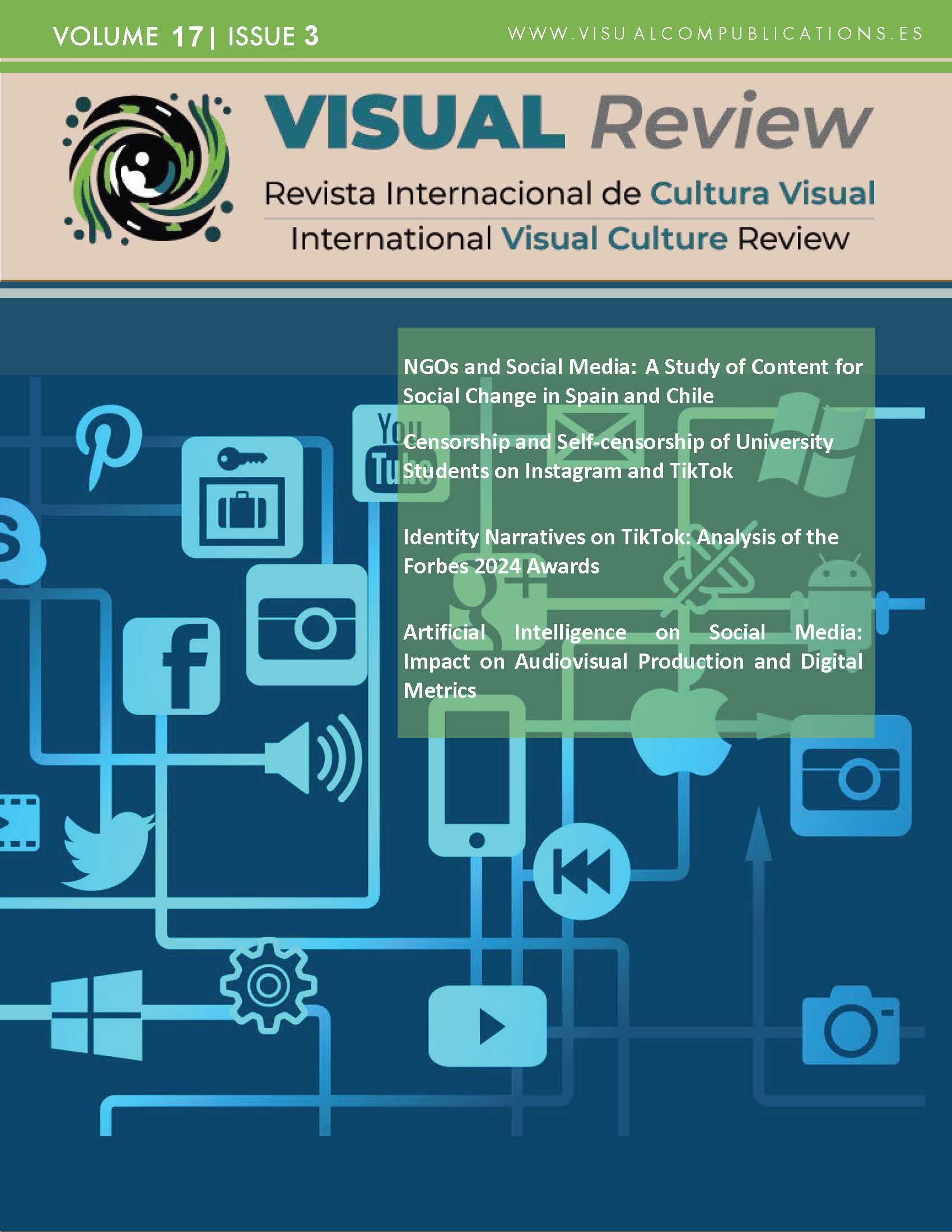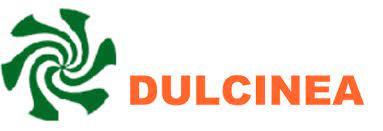Linguistic and Visual Patterns of ChatGPT in Higher Education
An Analysis of its Use in Undergraduate Theses
DOI:
https://doi.org/10.62161/revvisual.v17.5403Keywords:
Linguistic patterns, Writing style, Higher education, Academic integrity, ChatGPT, Artificial Intelligence, Educational TechnologyAbstract
This article examines the influence of artificial intelligence in academic writing, focusing on undergraduate theses. Its objective is to identify linguistic and visual patterns in texts generated or assisted by ChatGPT, through an analysis of 50 undergraduate and master's theses, equally distributed between a public and a private university in Peru. The results indicate that the most representative argumentative structures include terms such as “in addition”, “crucial role” and “exhaustive”. A 48% argumentative similarity was observed in the public university, in contrast to 72% in the private university. It is recommended to extend the analysis with other language models, such as BART.
Downloads
Global Statistics ℹ️
|
668
Views
|
408
Downloads
|
|
1076
Total
|
|
References
Acosta-Enriquez, B. G., Arbulú Pérez Vargas, C. G., Huamaní Jordan, O., Arbulú Ballesteros, M. A., & Paredes Morales, A. E. (2024). Exploring attitudes toward ChatGPT among college students: An empirical analysis of cognitive, affective, and behavioral components using path analysis. Computers and Education: Artificial Intelligence, 7, 100320. https://doi.org/10.1016/j.caeai.2024.100320 DOI: https://doi.org/10.1016/j.caeai.2024.100320
Al Murshidi, G., Shulgina, G., Kapuza, A., & Costley, J. (2024). How understanding the limitations and risks of using ChatGPT can contribute to willingness to use. Smart Learning Environments, 11(1), 36. https://doi.org/10.1186/s40561-024-00322-9 DOI: https://doi.org/10.1186/s40561-024-00322-9
Baek, C., Tate, T., & Warschauer, M. (2024). “ChatGPT seems too good to be true”: College students’ use and perceptions of generative AI. Computers and Education: Artificial Intelligence, 7, 100294. https://doi.org/10.1016/j.caeai.2024.100294 DOI: https://doi.org/10.1016/j.caeai.2024.100294
Dąbrowska, E. (2020). How Writing Changes Language. In Language Change: The Impact of English as a Lingua Franca (pp. 75–94). Cambridge University Press. https://doi.org/10.1017/9781108675000.006 DOI: https://doi.org/10.1017/9781108675000.006
Difabio de Anglat, H., & Álvarez, G. (2022). Las conclusiones de la tesis doctoral en educación: sus movimientos y pasos retóricos. Areté, Revista Digital Del Doctorado En Educación, 8(16), 11–36. https://doi.org/10.55560/ARETE.2022.16.8.1 DOI: https://doi.org/10.55560/ARETE.2022.16.8.1
Gruenhagen, J. H., Sinclair, P. M., Carroll, J. A., Baker, P. R. A., Wilson, A., & Demant, D. (2024). The rapid rise of generative AI and its implications for academic integrity: Students’ perceptions and use of chatbots for assistance with assessments. Computers and Education: Artificial Intelligence, 7, 100273. https://doi.org/10.1016/j.caeai.2024.100273 DOI: https://doi.org/10.1016/j.caeai.2024.100273
Guentulle, V., Nussbaum, M., Castillo, F., Chiuminatto, P., Spector, J. M., & Rojas, M. (2024). The relationship between creativity and language as measured by linguistic maturity and text production. Thinking Skills and Creativity, 54, 101636. https://doi.org/10.1016/j.tsc.2024.101636 DOI: https://doi.org/10.1016/j.tsc.2024.101636
Gunser, V. E., Gottschling, S., Brucker, B., Richter, S., Çakir, D. C., & Gerjets, P. (2022). The Pure Poet: How Good is the Subjective Credibility and Stylistic Quality of Literary Short Texts Written with an Artificial Intelligence Tool as Compared to Texts Written by Human Authors? Proceedings of the 44th Annual Meeting of the Cognitive Science Society: Cognitive Diversity, CogSci 2022, 1744–1750. https://www.scopus.com/inward/record.uri?eid=2-s2.0-85140344936&partnerID=40&md5=9b5cf2bcff5a7c1412231df0dac08974
Guo, J., Chen, Z., & Zheng, B. (2021). Postgraduate Competence and Academic Research Performance: The Mediating Role of Psychological Capital. Sustainability, 13(11). https://doi.org/10.3390/su13116469 DOI: https://doi.org/10.3390/su13116469
Hayhoe, R., & Zha, Q. (2005). The Role of Public Universities in the Move to Mass Higher Education: Some Reflections on the Experience of Taiwan, Hong Kong, and China. In Taking Public Universities Seriously (pp. 5–25). University of Toronto Press. http://www.jstor.org/stable/10.3138/9781442680333.4 DOI: https://doi.org/10.3138/9781442680333-002
Jo, H. (2024). From concerns to benefits: a comprehensive study of ChatGPT usage in education. International Journal of Educational Technology in Higher Education, 21(1), 35. https://doi.org/10.1186/s41239-024-00471-4 DOI: https://doi.org/10.1186/s41239-024-00471-4
Kim, E. (2017). Workshop design for enhancing the appropriateness of idea generation using analogical thinking. International Journal of Innovation Studies, 1(2), 134–143. https://doi.org/10.1016/j.ijis.2017.10.002 DOI: https://doi.org/10.1016/j.ijis.2017.10.002
Kiraka, R. (2020). University reputation management. In Strategic Marketing of Higher Education in Africa (pp. 159–175). Taylor and Francis. https://doi.org/10.4324/9780429320934-12 DOI: https://doi.org/10.4324/9780429320934-12
Lee, S., & Song, K. S. (2024). Teachers’ and students’ perceptions of AI-generated concept explanations: Implications for integrating generative AI in computer science education. Computers and Education: Artificial Intelligence, 7, 100283. https://doi.org/10.1016/j.caeai.2024.100283 DOI: https://doi.org/10.1016/j.caeai.2024.100283
Lee, V. R., Pope, D., Miles, S., & Zárate, R. C. (2024). Cheating in the age of generative AI: A high school survey study of cheating behaviors before and after the release of ChatGPT. Computers and Education: Artificial Intelligence, 7, 100253. https://doi.org/10.1016/j.caeai.2024.100253 DOI: https://doi.org/10.1016/j.caeai.2024.100253
Mateo, J. F. (2022). ARTIFICIAL REALITY Exploring the Potential Threats of Artificial Intelligence. VISUAL Review. International Visual Culture Review / Revista Internacional de Cultura , 9(2), 235–247. https://doi.org/10.37467/revvisual.v9.5004 DOI: https://doi.org/10.37467/revvisual.v9.5004
Naithani, K., Raiwani, Y. P., & Sissodia, R. (2022). Text-Based Analysis of COVID-19 Comments Using Natural Language Processing. In D. A., A. S.S., & S. A. (Eds.), Communications in Computer and Information Science: Vol. 1546 CCIS (pp. 195–209). Springer Science and Business Media Deutschland GmbH. https://doi.org/10.1007/978-3-030-95711-7_17 DOI: https://doi.org/10.1007/978-3-030-95711-7_17
Peña-Cáceres, O., Rea, M. G. B., Silva-Marchan, H., Espinoza-Nima, R., Yánez-Palacios, J., & Garay-Silupu, E. (2025). Using Google Maps as a Tool for Two-Way Political Communication with Citizens: Analysis of the Case of the Congress of the Republic of Peru. VISUAL REVIEW. International Visual Culture Review / Revista Internacional de Cultura Visual, 17(1), 149–163. https://doi.org/10.62161/REVVISUAL.V17.5342 DOI: https://doi.org/10.62161/revvisual.v17.5342
Putra, F. W., Rangka, I. B., Aminah, S., & Aditama, M. H. R. (2023). ChatGPT in the higher education environment: Perspectives from the theory of high order thinking skills. Journal of Public Health (United Kingdom), 45(4), e840–e841. https://doi.org/10.1093/pubmed/fdad120 DOI: https://doi.org/10.1093/pubmed/fdad120
Shahzad, M. F., Xu, S., & Javed, I. (2024). ChatGPT awareness, acceptance, and adoption in higher education: the role of trust as a cornerstone. International Journal of Educational Technology in Higher Education, 21(1), 46. https://doi.org/10.1186/s41239-024-00478-x DOI: https://doi.org/10.1186/s41239-024-00478-x
Soria, G. M. L. (2023). La introducción de un artículo científico. Gaceta Médica Boliviana, 46(1), 5–5. https://doi.org/10.47993/GMB.V46I1.611 DOI: https://doi.org/10.47993/gmb.v46i1.611
Sun, Y., Sheng, D., Zhou, Z., & Wu, Y. (2024). AI hallucination: towards a comprehensive classification of distorted information in artificial intelligence-generated content. Humanities and Social Sciences Communications, 11(1), 1278. https://doi.org/10.1057/s41599-024-03811-x DOI: https://doi.org/10.1057/s41599-024-03811-x
Suriano, R., Plebe, A., Acciai, A., & Fabio, R. A. (2025). Student interaction with ChatGPT can promote complex critical thinking skills. Learning and Instruction, 95, 102011. https://doi.org/10.1016/j.learninstruc.2024.102011 DOI: https://doi.org/10.1016/j.learninstruc.2024.102011
Vialart, V. N., Rodríguez López, E. I., Véliz Martínez, P. L., Suárez Cabrera, A., Morales Cordovés, E., Zelada Pérez, M. de los M., & Pérez Morales, K. (2016). Tendencias actuales de programas de estudio de pregrado y posgrado con orientación a la Atención Primaria de la Salud. Educación Médica Superior, 30, 615–626. http://scielo.sld.cu/scielo.php?script=sci_arttext&pid=S0864-21412016000300015&nrm=iso
Vieno, K., Rogers, K. A., & Campbell, N. (2022). Broadening the Definition of “Research Skills” to Enhance Students’ Competence across Undergraduate and Master’s Programs. Education Sciences, 12(10). https://doi.org/10.3390/educsci12100642 DOI: https://doi.org/10.3390/educsci12100642
Weng, X., Xia, Q., Ahmad, Z., & Chiu, T. K. F. (2024). Personality traits for self-regulated learning with generative artificial intelligence: The case of ChatGPT. Computers and Education: Artificial Intelligence, 7, 100315. https://doi.org/10.1016/j.caeai.2024.100315 DOI: https://doi.org/10.1016/j.caeai.2024.100315
Williams, A. (2024). Comparison of generative AI performance on undergraduate and postgraduate written assessments in the biomedical sciences. International Journal of Educational Technology in Higher Education, 21(1), 52. https://doi.org/10.1186/s41239-024-00485-y DOI: https://doi.org/10.1186/s41239-024-00485-y
Xu, Y., Gábor, K., Khouas, L., & Segond, F. (2022). Prompt Engineering-Based Text Anomaly Detection. In E. Y., J. T., P. T., & B. M.Z. (Eds.), Traitement Automatique des Langues Naturelles, TALN 2022 - Actes de la 29e Conference sur le Traitement Automatique des Langues Naturelles: Conference Principale (Vol. 1, pp. 42–53). Association pour le traitement automatique des langues. https://www.scopus.com/inward/record.uri?eid=2-s2.0-85175856968&partnerID=40&md5=ad784ff5d1617b9b7a7c4b0d00fa46be
Downloads
Published
How to Cite
Issue
Section
License
Copyright (c) 2025 Authors retain copyright and transfer to the journal the right of first publication and publishing rights

This work is licensed under a Creative Commons Attribution-NoDerivatives 4.0 International License.
Those authors who publish in this journal accept the following terms:
-
Authors retain copyright.
-
Authors transfer to the journal the right of first publication. The journal also owns the publishing rights.
-
All published contents are governed by an Attribution-NoDerivatives 4.0 International License.
Access the informative version and legal text of the license. By virtue of this, third parties are allowed to use what is published as long as they mention the authorship of the work and the first publication in this journal. If you transform the material, you may not distribute the modified work. -
Authors may make other independent and additional contractual arrangements for non-exclusive distribution of the version of the article published in this journal (e.g., inclusion in an institutional repository or publication in a book) as long as they clearly indicate that the work was first published in this journal.
- Authors are allowed and recommended to publish their work on the Internet (for example on institutional and personal websites), following the publication of, and referencing the journal, as this could lead to constructive exchanges and a more extensive and quick circulation of published works (see The Effect of Open Access).













